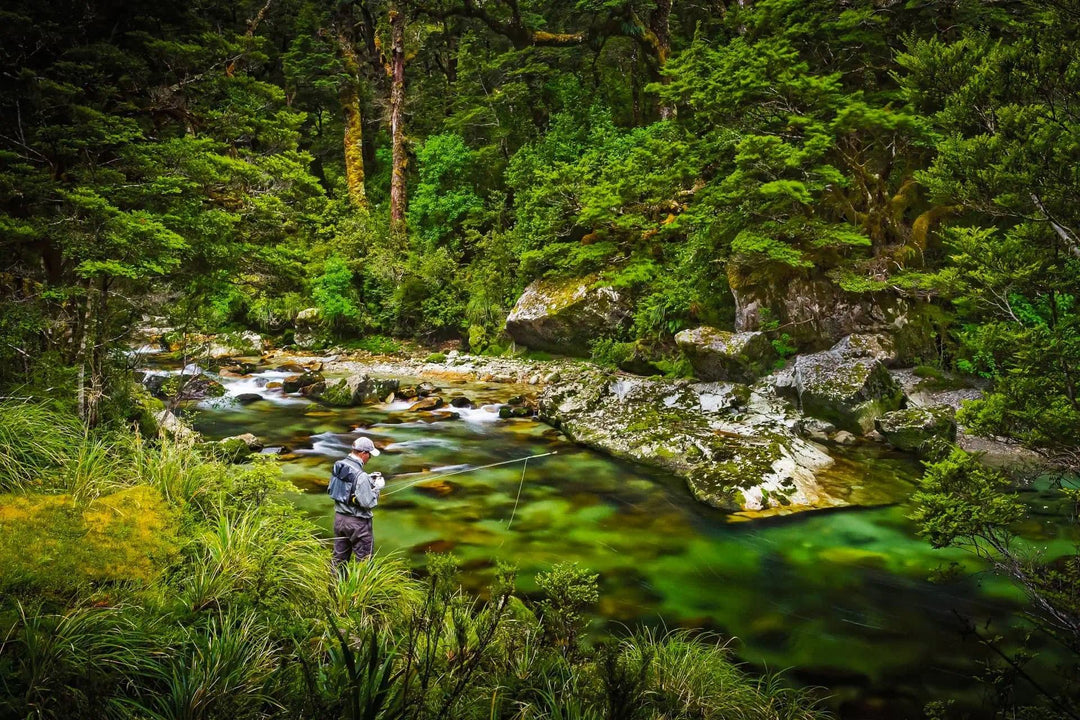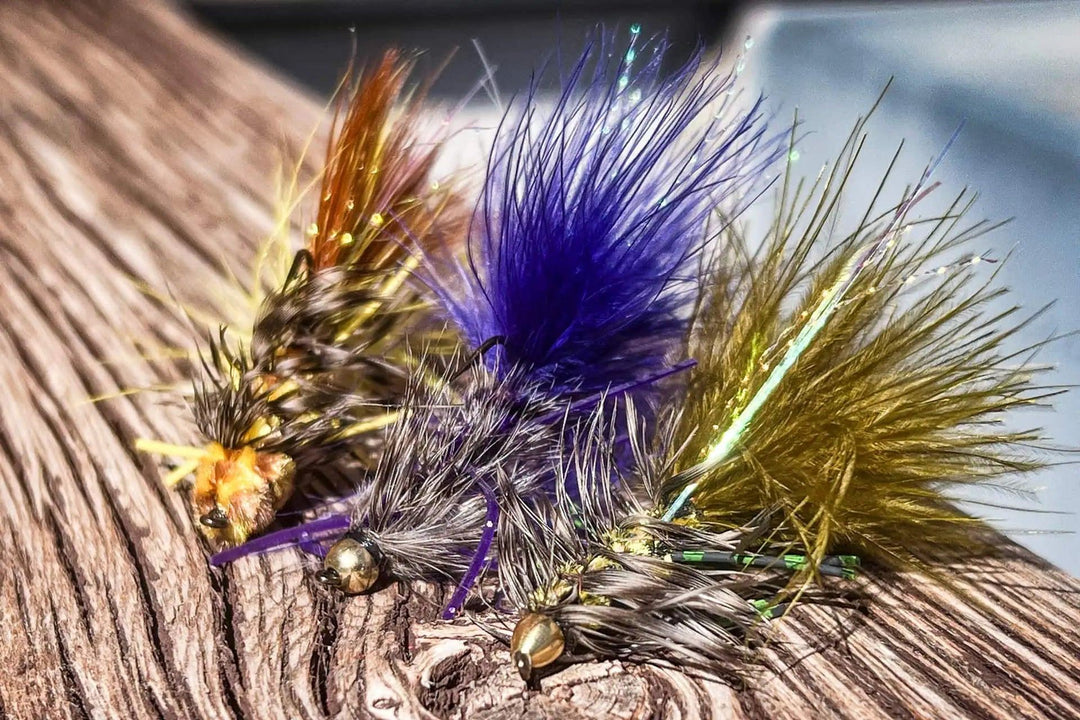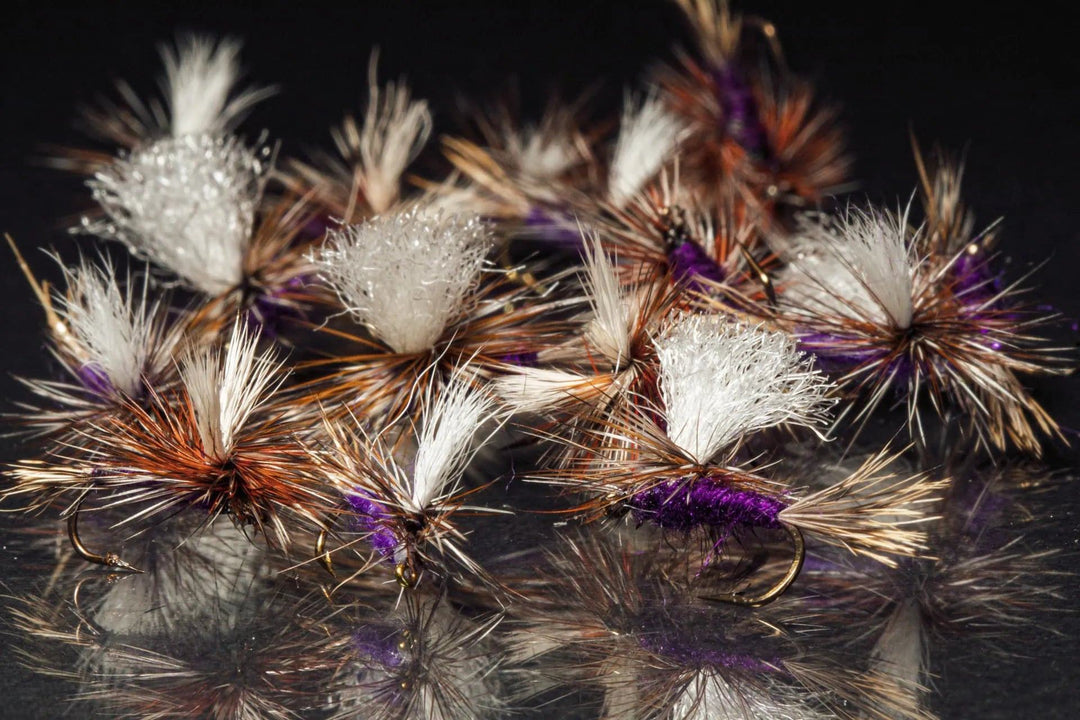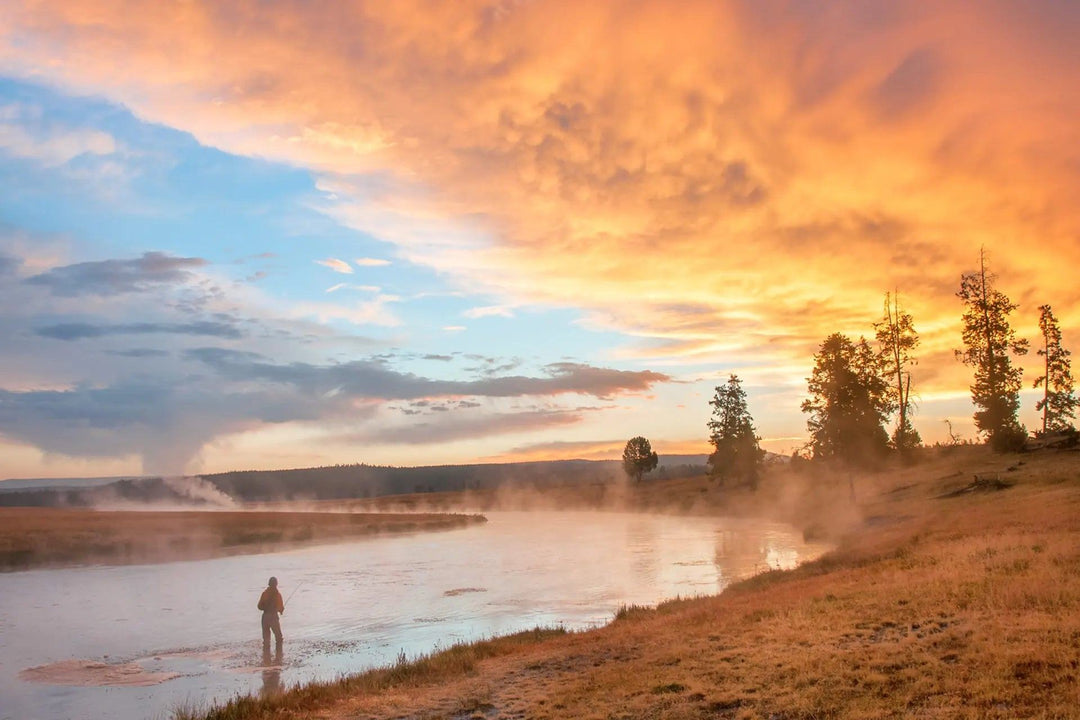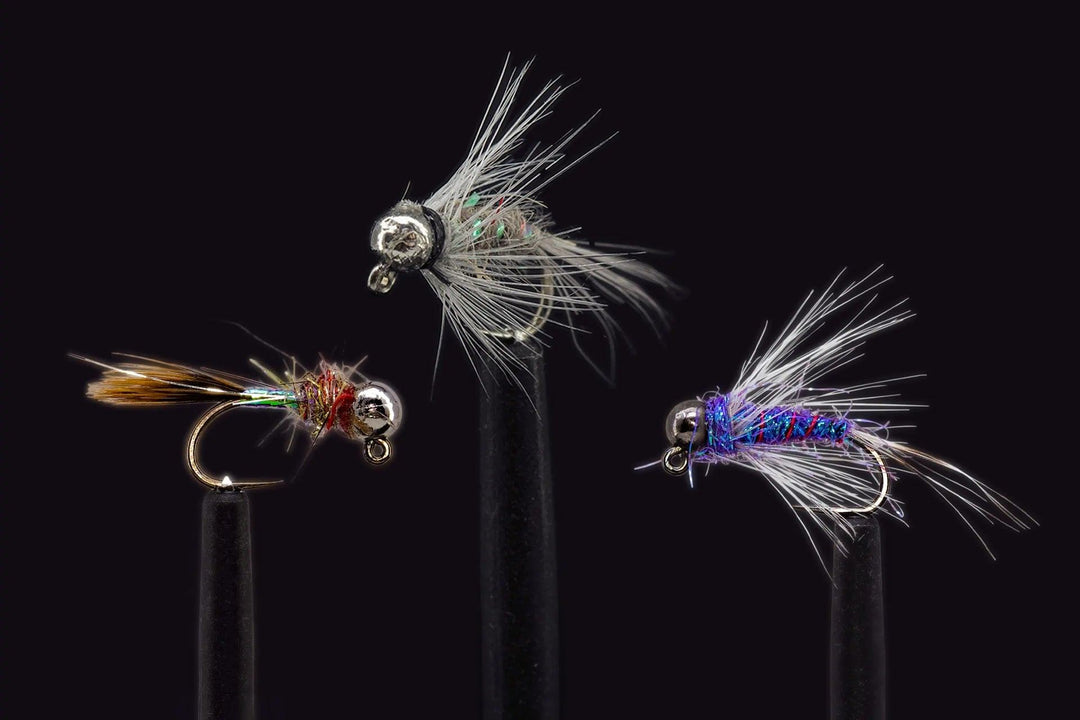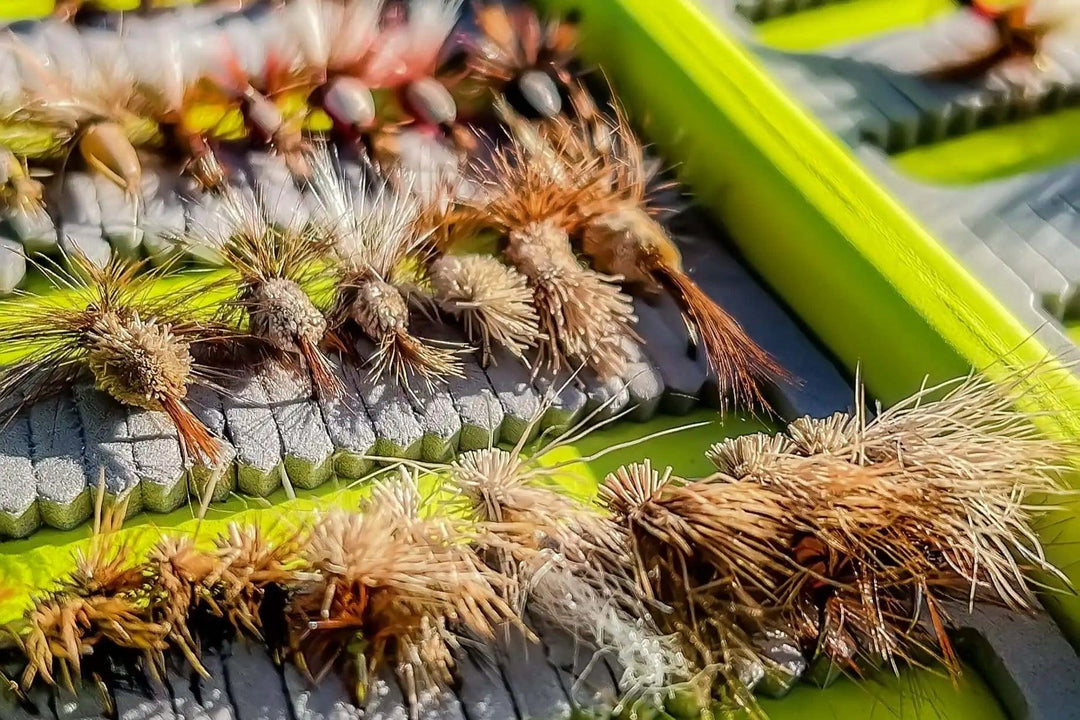Casting into Summer: An Early Season Fly Selection Guide

Summer is here meaning the dynamic world of fly fishing begins to bloom, offering enthusiasts ample opportunities to enjoy a lively season. The warmer temperatures and long days, brings about a distinct change in the aquatic insect population, subsequently affecting fly selection for anglers of any level. During this period, rivers and lakes see a hive of activity, with hatches aplenty and fish feeding actively. The rich diversity of insect life during summer is a vital factor that should guide your fly selection. Here are some considerations for choosing the best summer flies and tips for fly fishing during this vibrant season.
Insect Life Cycle
The most basic rule of fly selection is matching the hatch - the process of choosing a fly that best resembles the insects that fish are feeding on. With a surge in the number of insects during the summer, trout, in particular, become selective eaters, making your choice of fly significantly essential.
Knowing the life cycle of local insects becomes an important part of your fly fishing strategy. Many insects, such as mayflies, caddisflies, and stoneflies, hatch in the warmer months, and imitating these in their different life stages (nymph, emerger, adult, spinner) will greatly enhance your fishing success.
Mastering Early Summer Fly Fishing Techniques & Tactics
Summer brings unique conditions that call for specific techniques to maximize your success on the water. Let's dive into some key strategies that will elevate your fly fishing game this season.
-
Understanding Water Temperature: Early summer is characterized by rising water temperatures which play a critical role in fish behavior. Trout, for instance, are most active in water temperatures between 50 and 68 degrees Fahrenheit. Use a stream thermometer to gauge the water temperature, allowing you to strategically time your fishing. Early mornings and late evenings are often most productive, as temperatures are more optimal and insect hatches are abundant.
-
Matching the Hatch: Early summer sees a surge in insect hatches. Mayflies, caddisflies, and stoneflies make their presence known during this period, and "matching the hatch" becomes a crucial technique. This strategy involves choosing a fly that closely resembles the insects that fish are actively feeding on. This will require keen observation of your environment, identifying the prevailing insects, and selecting the appropriate flies.
-
Dry Fly Techniques: Dry fly fishing is a popular method in early summer. This technique involves casting a fly that floats on the surface of the water, imitating an adult insect. The key here is presentation. Cast upstream of a feeding fish, allowing your fly to drift down naturally with the current. Aim for drag-free drifts - your fly should float naturally, just like a real insect would.
-
Nymphing Tactics: Nymph fishing can be incredibly productive in early summer. Nymphs are the immature stage of aquatic insects and are a significant part of a fish’s diet. Cast your nymph upstream and let it drift downstream, mimicking the natural journey of a nymph through the water column. Frequently, a strike indicator can help detect subtle takes.
-
Use Terrestrial Patterns: With the warmth of early summer, terrestrial insects like ants, beetles, and grasshoppers become more active and often fall into the water, providing an additional food source for fish. Having a selection of terrestrial flies and knowing when to use them can provide an edge. Typically, these patterns are most effective in windy conditions or near overhanging vegetation.
- Streamer Fishing: Streamer fishing can be particularly effective in the early morning or late evening. Streamers imitate larger food sources like minnows and leeches. Cast your streamer across the current and retrieve it with a series of short, jerky pulls to imitate a wounded or fleeing baitfish. This technique can provoke aggressive strikes from predatory fish.

Fly Selection for Early Summer
Dry Flies
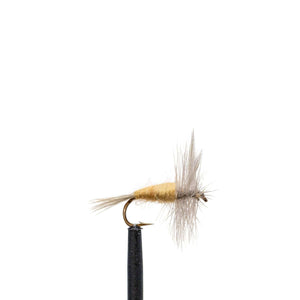 |
1. Pale Morning Dun (PMD) is a quintessential summer hatch, that are prevalent across the West. These insects are usually seen in late morning or early afternoon. Their nymph and emerger stages are productive throughout the day, but when adults are hatching, switch to a dry PMD pattern. Our PMD Emerger and PMD Parachute flies are a great choice to match this hatch. For optimal use, present the PMD during a hatch by casting upstream and letting it drift naturally, mimicking the actual behavior of the insect. |
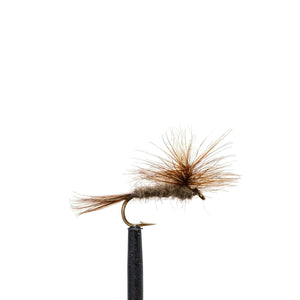 |
2. Parachute Adams is a versatile, highly visible, and effective fly pattern that broadly imitates a range of insects, making it ideal when multiple species are hatching. For effective use, present it on the water surface during suspected hatches, allowing it to drift naturally downstream. Its high visibility "parachute" and realistic profile not only attract fish but also make it easy for anglers to track, enhancing the overall fishing experience. |
 |
3. Green Para Drake skillfully imitating the Green Drake mayfly, a common and significant food source for trout. To utilize it effectively, present it on the water during a Green Drake hatch, letting it drift naturally with the current. Its parachute design ensures it floats realistically, while its high visibility allows anglers to easily keep track of it, increasing the likelihood of a successful strike. |
|
|
4. Elk Hair Caddis effectively imitates adult caddisflies, a key food source for trout during this period. For effective usage, present it on the water during a caddisfly hatch, allowing it to float naturally or skittering it lightly to mimic a laying or fluttering caddisfly. The fly's durable elk hair wing and high-floating design enable it to stay visible and afloat, increasing its attractiveness to feeding fish. |
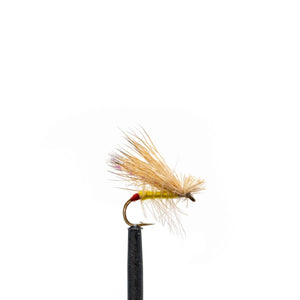 |
5. Yellow Sally is designed to imitate the Yellow Sally Stoneflies that are abundant during this season. For best results, present this fly on the water during a Yellow Sally hatch, allowing it to drift naturally downstream. Its bright color and realistic pattern offer a lifelike appearance that effectively entices trout, while its high floatability ensures its visibility and effectiveness on the water's surface. |
 |
6. Royal Wulff serves as an excellent attractor pattern that triggers strikes even when there's no specific hatch. For optimal use, cast it upstream and let it float naturally downstream, or give it an occasional twitch to mimic a struggling insect. Its high visibility due to the white calf hair wing and vibrant body, along with its ability to float high in turbulent water, make it a favorite among anglers, enticing trout in a variety of conditions. |
When fishing with dry flies, observe the water for rising fish or insect activity. Match the size, color, and silhouette of the natural insects with your chosen dry fly. Cast upstream or across the current, allowing the fly to land gently on the water. Mend the line to achieve a drag-free drift and monitor for any signs of fish taking the fly. Stay attuned to the natural movements of insects on the water's surface and adjust your presentation accordingly.
SHOP ALL DRY FLIES
Nymphs
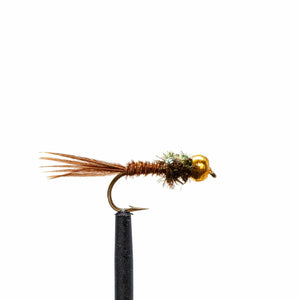 |
1. Beadhead Flashback Pheasant Tail is an excellent early summer fly because it effectively imitates a wide range of mayfly nymphs, a staple in the trout diet. The beadhead provides attractive flash and aids in sinking the fly to the desired depth, while the pheasant tail offers a lifelike motion, making it irresistible to trout in various water conditions. |
 |
2. Beadhead Hare's Ear Flashback convincingly imitates a range of aquatic nymphs, including caddisflies and mayflies, key food sources for trout. Its beadhead adds flash and helps the fly sink to feeding zones, while the 'flashback' provides an extra attractor, making it highly appealing to fish. |
 |
3. Tungsten Bead Duracell Jig imitates caddis pupa and various mayfly nymphs, common food for trout in this season. Its tungsten bead head enables quick sinking to the feeding depth, and its jig hook design minimizes snagging and optimizes hook-up rates. To use it, fish it under an indicator or as part of a Euro-nymphing setup, allowing it to drift naturally with the current or giving it small twitches to imitate the movement of emerging caddis or dislodged nymphs. |
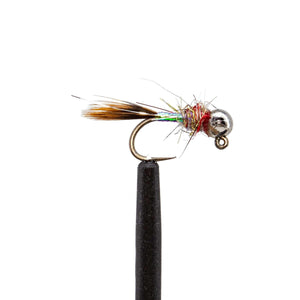 |
4. Tungsten Bead Rainbow Warrior Jig is known for its ability to mimic a wide variety of small nymphs, making it irresistible to trout. Its flashy, iridescent body stands out in the water, and the tungsten bead head ensures rapid sinking to the feeding lanes. For effective use, present it as part of a nymphing rig under an indicator or in a Euro-nymphing setup, allowing it to naturally drift with the current or imparting slight movement to mimic a dislodged or active nymph. |
 |
5. Beadhead Micro Golden Stone is particularly effective in imitating the nymph stage of the Golden Stonefly, a prevalent food source for trout during this season. The beadhead not only adds attractive flash but also aids in quickly reaching deeper water levels where fish often feed. To effectively utilize this fly, drift it along the bottom using a traditional nymphing setup or under an indicator, mimicking the natural movements of a stonefly nymph. |
 |
6. Conehead Rootbeer Rubber Legs is a great early summer fly, effectively imitating larger nymphs and aquatic insects, such as stoneflies and hellgrammites. The conehead helps it quickly sink to the bottom where these insects dwell. To use it effectively, drift it along the riverbed using a nymphing setup, replicating the natural movement of these insects. Its rubber legs add lifelike movement and vibration in the water, making it highly attractive to predatory fish. |
When fishing with nymph patterns, it's crucial to match the size, color, and behavior of the natural nymphs in the water. Use an appropriate indicator, weight, or leader setup to achieve the desired depth and drift. Focus on presenting the fly near the bottom, as that's where nymphs are most active. Pay attention to the movements and behaviors of fish to determine the most effective nymphing technique and adjust your presentation accordingly. By mastering the art of nymph fishing, you can tap into the abundant food sources below the surface and increase your chances of enticing strikes from trout and other freshwater fish.
SHOP ALL NYMPHS

Terrestrials
|
1. Purple (Barney) Chubby Chernobyl is highly effective for summer fly fishing due to its ability to imitate a broad spectrum of large terrestrial insects and attractor patterns. Its foam body provides excellent buoyancy, making it perfect for floating over fast, choppy water and its vibrant purple color makes it highly visible and attractive to fish. To utilize it best, cast it near the banks or under overhanging vegetation where terrestrial insects are likely to fall into the water. Allow it to drift naturally or give it an occasional twitch to mimic a struggling insect, enticing a strike from opportunistic trout. |
|
 |
2. Gray/Amber (007) Micro Chubby excels in summer fly fishing as it serves as a versatile attractor pattern and a mimic for a wide range of insects including terrestrials and smaller mayflies. Its foam body provides great floatability, ideal for navigating swift currents and riffles. To get the best results, cast it close to shorelines or areas with overhanging vegetation where insects frequently drop onto the water. Let it drift naturally or give it subtle twitches to mimic the behavior of a fallen or trapped insect, prompting strikes from feeding trout. |
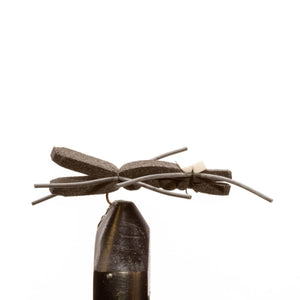 |
3. Chernobyl Ant Black serves as a powerful attractor pattern and imitating a variety of terrestrial insects, such as beetles or ants. Its foam construction allows for high floatability and durability, even in rough waters. For best results, cast this fly near the banks or under overhanging vegetation where terrestrials are likely to drop. Allow it to float naturally downstream or provide it an occasional twitch to mimic an insect struggling on the water's surface, attracting opportunistic trout. |
 |
4. The Black/Purple (Knockout) Chubby Chernobyl is known for its ability to imitate large terrestrial insects and serve as a potent attractor pattern. Its foam construction offers superb floatability and the striking black and purple color combination stands out to fish, even in choppy waters. For best results, cast it near shorelines or under overhanging vegetation, mimicking areas where insects naturally fall into the water. Either let it drift with the current or add occasional twitches to simulate struggling insects, triggering aggressive strikes from trout. |
 |
5. Tan/Copper (The Mule) Chubby Chernobyl effectively impersonating a wide range of large terrestrial insects and serving as a striking attractor pattern. Its foam construction ensures excellent buoyancy, while the tan and copper colors blend naturally with the environment. For optimal use, cast this fly near the banks or under overhanging foliage where terrestrial insects are likely to fall into the water. Let it drift naturally or give it a gentle twitch to mimic a struggling insect, enticing a strike from opportunistic trout. |
 |
6. Dave's Hopper is a fantastic fly for summer fishing, known for its adept imitation of grasshoppers, a common terrestrial insect during this season. Its foam and deer hair construction provide excellent floatability and lifelike appearance, making it highly attractive to trout. To use it effectively, cast it near grassy banks or under overhanging vegetation where grasshoppers are likely to fall into the water. Allow it to drift with the current or twitch it slightly to mimic a struggling grasshopper, triggering an aggressive response from trout. |
Fly fishing with terrestrial flies during summer is a rewarding practice. It's crucial to aim for the banks or overhanging vegetation, allowing your fly to dead drift naturally with the current. Occasionally twitch your fly to imitate struggling insects, like hoppers. Keep your fly buoyant and visible with a floatant and don't shy away from windy conditions, as they can blow more terrestrials into the water. Lastly, use a stout tippet to handle larger fish that terrestrial insects often attract.
SHOP ALL TERRESTRIALS
Streamers
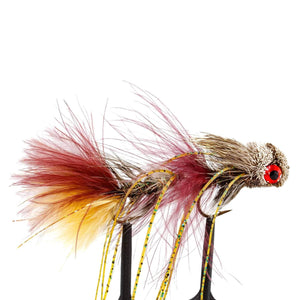 |
1. Natural Sex Dungeon is an excellent choice for summer fly fishing due to its unique ability to mimic a variety of large food sources, including baitfish and leeches. It features a flashy and articulated design, creating an irresistible, life-like action in the water. To effectively fish with the Natural Sex Dungeon, cast it across the current or downstream, then retrieve it with intermittent strips and pauses to imitate a wounded or fleeing prey. |
 |
2. Brown/Yellow Peanut Envy effectively imitates the sculpins and smaller baitfish that are prevalent during this time. It offers a dual-tone color scheme and articulated design for realistic swimming action. For best results, cast this fly across and downstream, then strip it back with varied speeds to mimic an erratic, fleeing baitfish. |
 |
3. JJ Special Olive/Black stands out in the summer months due to its contrasting colors and flashy materials that imitate small fish, drawing in hungry trout. To use it, cast it near structures where fish are likely to hide and retrieve it with a mix of fast and slow strips, giving the appearance of a darting or wounded baitfish. |
 |
4. Beadhead Purple Wooly Bugger is highly effective in attracting trout with its distinctive color and lifelike action, which imitates a range of prey, including baitfish and leeches. Cast this fly upstream and let it sink before retrieving it with short, irregular strips to mimic a wounded or struggling creature. |
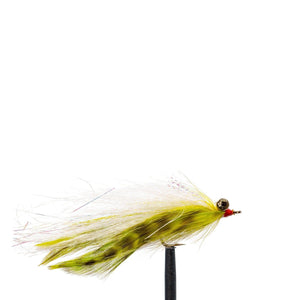 |
5. Chartreuse/Kreelex DNA Clouser is a brightly colored streamer that shines at imitating small baitfish with its flashy, reflective materials. To use this fly, cast it across and downstream, and retrieve it with a combination of fast and slow strips to give the appearance of a darting, fleeing fish. |
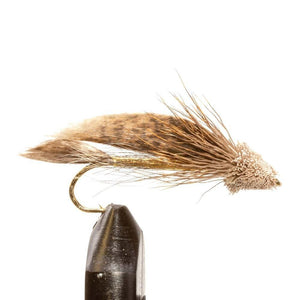 |
6. Muddler Minnow is a classic streamer that imitates a variety of prey, including sculpins and minnows. The spun deer hair head creates a unique action and disturbance in the water. Cast it near structures and retrieve it with a varied strip pace, occasionally letting it swing in the current to mimic a disoriented or wounded baitfish |
Remember, streamer fishing techniques can vary depending on the specific conditions and the behavior of the fish. Experiment with different retrieval speeds, pauses, and depths to find the most effective presentation for each streamer fly.
SHOP ALL STREAMERS
Using these Flies
Dry Flies: Dry flies like the PMD, Parachute Adams, Green Para Drake, Yellow Sally Dry Fly, Elk Hair Caddis, and terrestrial patterns are designed to float on the surface. Cast them upstream and let them drift naturally downstream. The key is making your fly look as natural as possible, so avoid drag that may make your fly behave unnaturally.
Nymphs: Wet flies and nymph patterns such as the Tungsten Bead Duracell Jig, Beadhead Flashback Pheasant Tail, Tungsten Bead Rainbow Warrior Jig, and the Beadhead Micro Golden Stone are meant to be fished underwater. They can be used in various ways, including a dead drift, where you allow the fly to move naturally with the current, or actively stripped to mimic the movement of a swimming nymph. Try different methods to see what the fish respond to best on any given day.
Summer fly fishing is as much about observation as it is about the casting. Pay attention to what's happening around you - observe the insects and the behavior of the fish. Don't be afraid to switch flies and techniques if something's not working.
Gear up for a successful early summer fly fishing adventure with Jackson Hole Fly Company. Get out there and enjoy the bounty that nature offers. Happy Fishing & Tight Lines!




